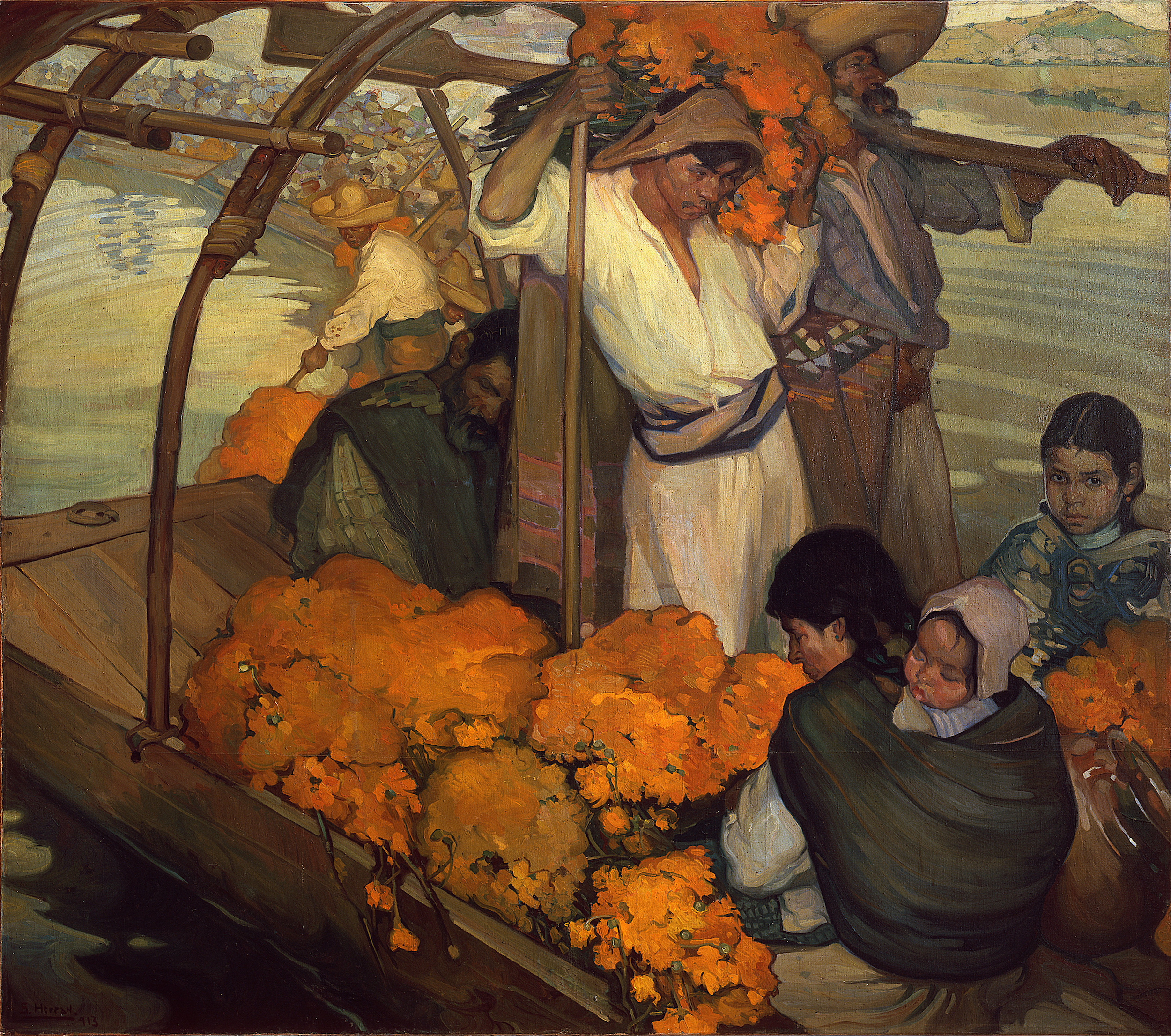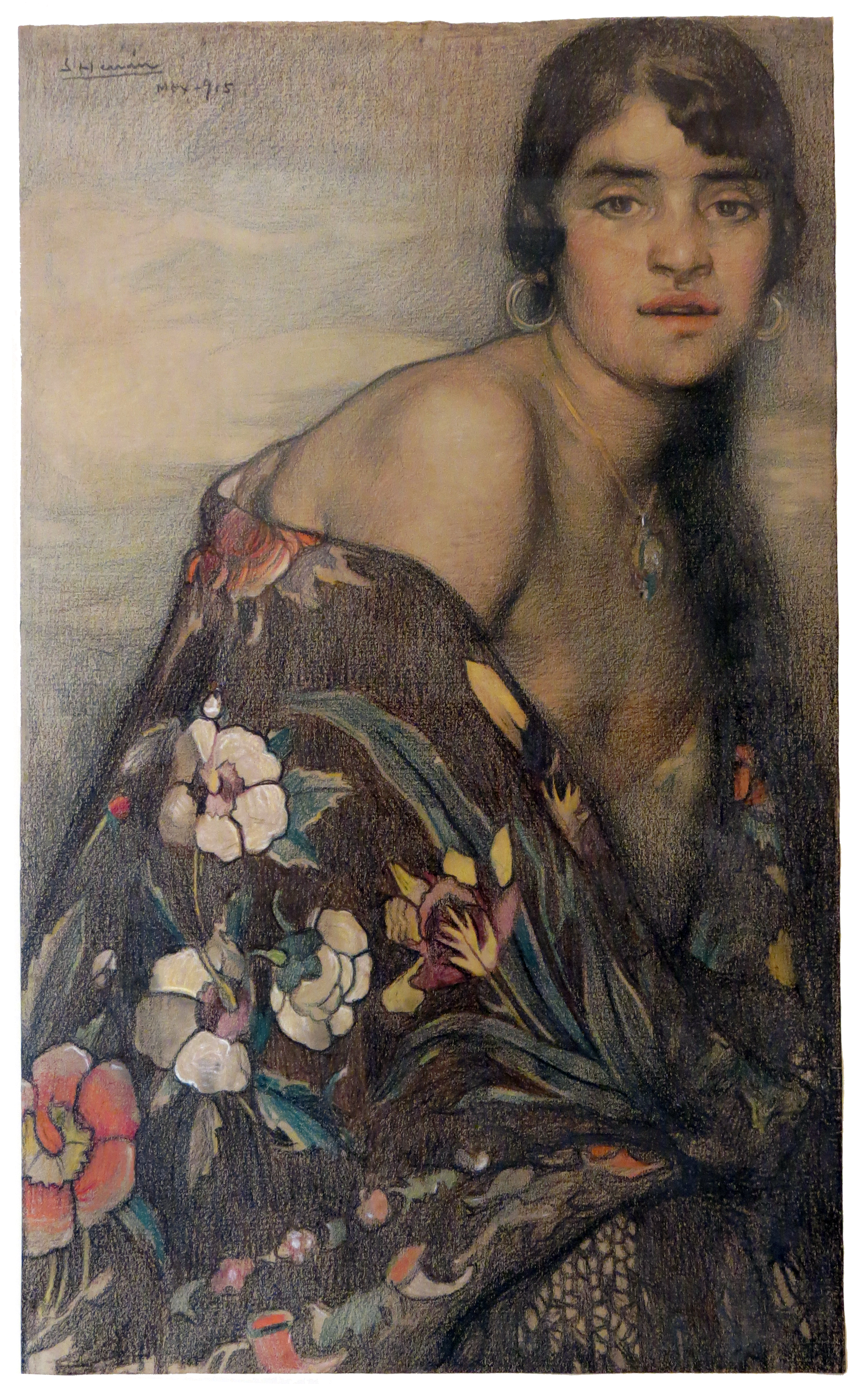Saturnino Herrán was a pioneering figure in turn-of-the-20th century Mexican art. A contemporary of the better-known Diego Rivera, he lived during the turbulent time of the Mexican Revolution that began around 1910.
Unlike most artists before him, Herrán showed traditional Mexican and colonial European cultures blending together as they did in real life. His works featured native Mexicans as well as people of mixed Mexican and European ancestry—called “mestizos” in Spanish. His paintings frequently referenced aspects of native culture, religion, and mythology, often existing side-by-side with their European-influenced counterparts.
This painting, called The Offering, is one of Herrán’s best-known works, and it’s very characteristic of his oeuvre. The painting depicts a mestizo family in traditional attire. They are travelling in a boat filled with bunches of marigolds, a flower used in Day of the Dead ceremonies, which they seem to be delivering for the festivities. This is the “offering” referred to by the title.
By portraying previously-overlooked aspects of early-20th century Mexican culture at a key moment in the nation’s history, Herrán influenced many generations of Mexican artists working during and after the Revolution. Unfortunately, his own career was very short; he died at the age of just 31 and did not see the end of the Revolution.
- Alexandra Kiely


 Saturnino Herrán
Saturnino Herrán